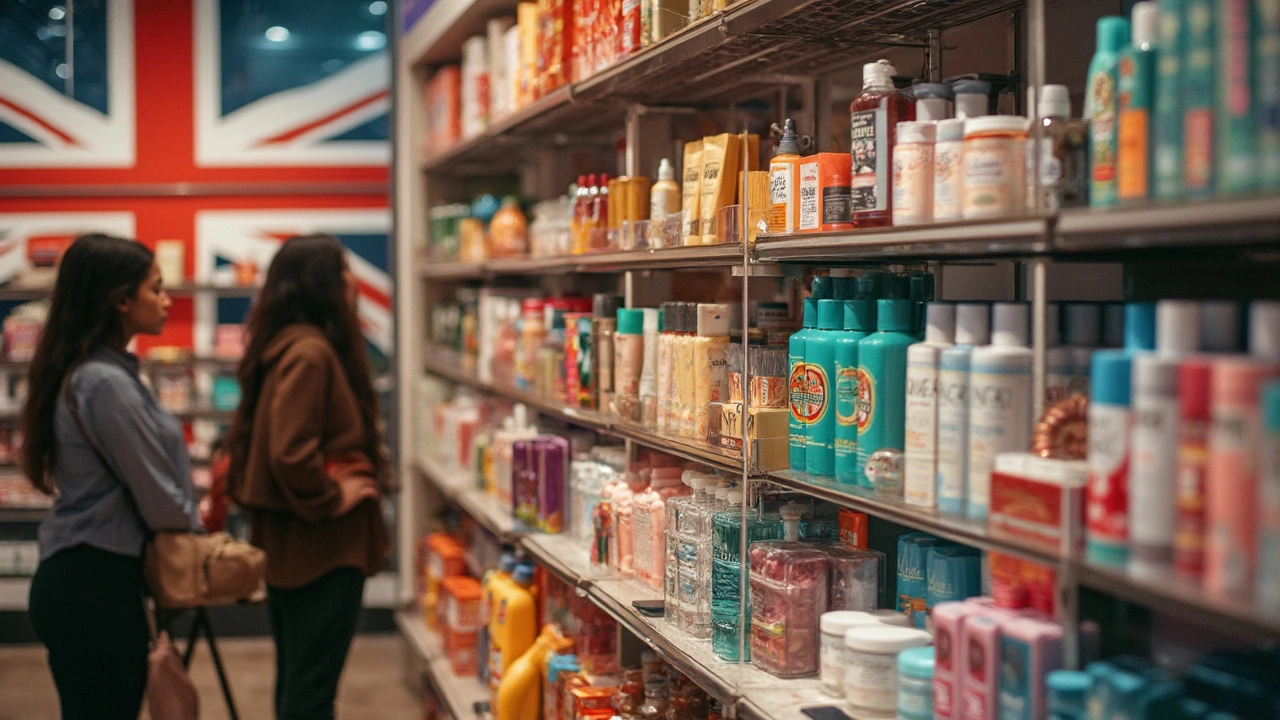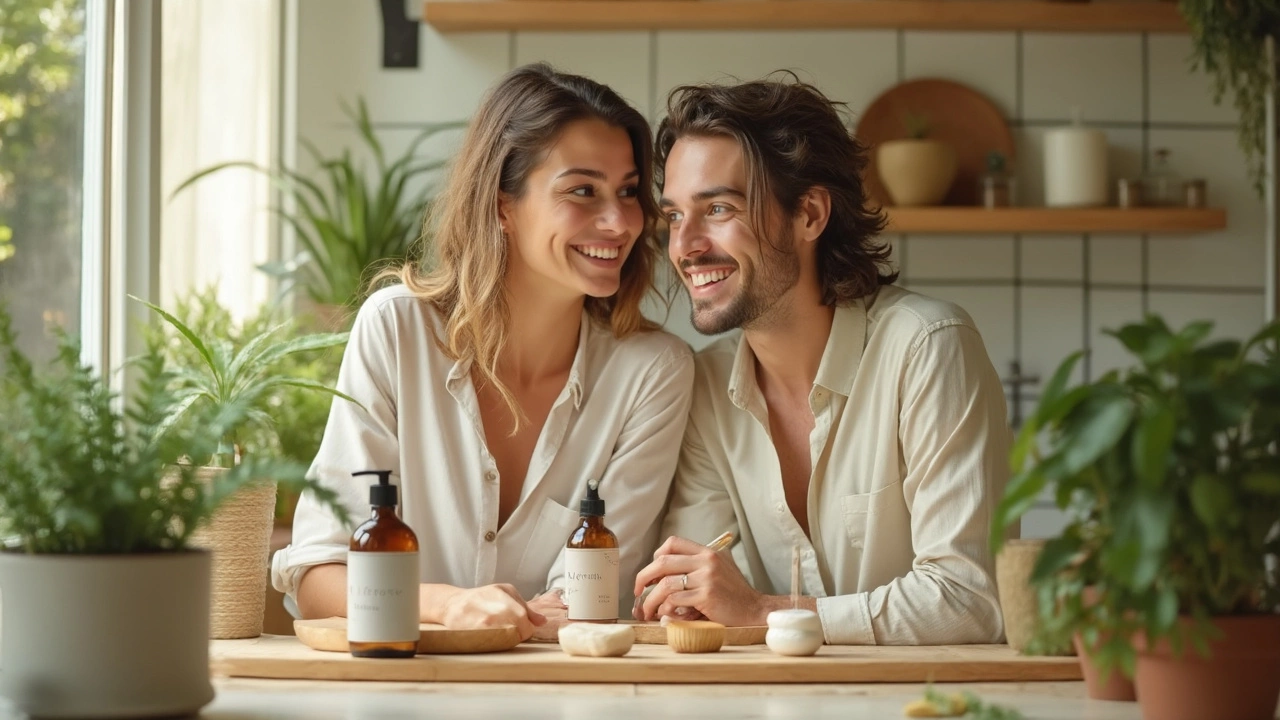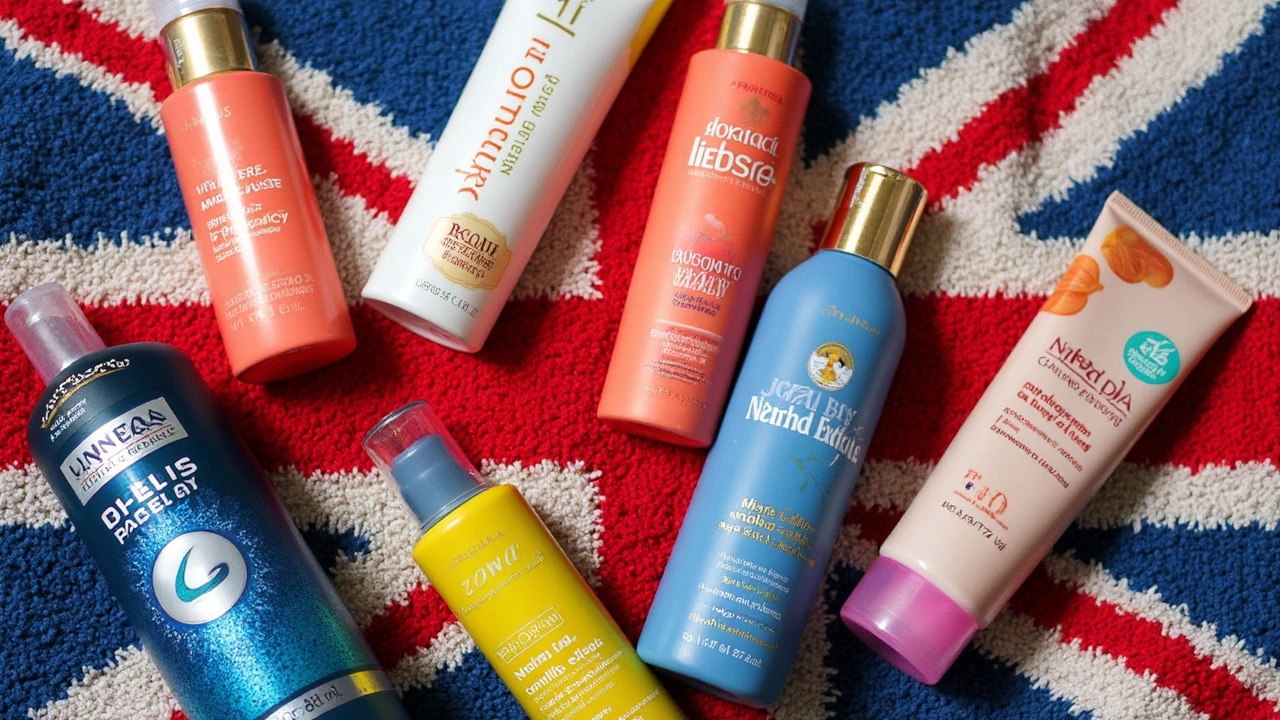
You’ve probably noticed there are way too many products stuffed on every bathroom shelf these days. Shampoos, face washes, deodorants—how do you spot the brands that actually make a difference?
Here’s the thing: top toiletries brands earn their stripes by being reliable, safe, and honestly, just better at getting the job done. They don’t just promise soft hair or glowing skin—they deliver every single day. Jumping from budget-friendly favorites like Dove and Nivea, to luxury classics like L’Occitane or Aesop, the best names have built up something kind of rare: real trust. Fun fact—Dove was first to use ‘moisturizing cream’ in their bar soap, and people still rave about it.
It’s not all about what smells the best, either. Some brands stand out for tackling sensitive skin, using fewer harsh chemicals, or making sure their products are available everywhere. If you want more practical tips—like which everyday basics deserve a permanent spot in your bag or what ingredient labels are actually worth reading—you’re in the right place.
- Household Names: What Makes a Brand Top?
- Must-Have Toiletries: The Star Products
- What Sets Premium Brands Apart?
- Eco-Friendly and Ethical Options
- Tips for Picking the Right Toiletries
Household Names: What Makes a Brand Top?
Ever wondered why some toiletries brands are practically in every home? There’s a simple formula: trust, consistency, and a solid track record. Real talk—if a brand’s been around for decades and your grandma uses it, there’s probably a reason.
Dove cracked the code by focusing on gentle cleansers long before “sensitive skin” was cool. Colgate made brushing feel non-negotiable, and it’s no joke—over 70% of US households have a Colgate product. Nivea became everyone’s go-to for basic, fuss-free moisturizers thanks to its “blue tin” that hasn’t changed in more than 100 years. These companies aren’t just selling stuff—they’re part of daily life, from morning routines to travel kits.
So what actually makes a brand climb to the top spot? Here’s what usually sets them apart:
- Consistency: Their products work the same every time. No weird surprises.
- Global Presence: You’ll find them everywhere, from city supermarkets to tiny corner shops and airports.
- Real Results: Consumers keep coming back because the stuff does what it says, whether that’s fighting acne, moisturizing, or freshening breath.
- Accessible Pricing: Top cosmetics brands win by offering good value—no need to splash out when basics work so well.
- Backed by Science: Big names like Neutrogena or Sensodyne usually hype up their research—clinical studies, dermatologist recommendations, that kind of thing.
Here’s a quick look at how some leaders stack up by popularity. This is straight from a 2024 consumer survey:
| Brand | Product Type | Global Recognition |
|---|---|---|
| Dove | Soap, Body Wash | High |
| Colgate | Toothpaste | Very High |
| Nivea | Lotion, Cream | High |
| Neutrogena | Face Wash, Sunscreen | High |
| Sensodyne | Toothpaste | Growing Fast |
What’s the takeaway? To earn top status, a brand has to show up, keep up, and never let folks down. When people talk about ‘best’ or ‘must-have’ toiletries brands, they’re usually talking about the ones that feel like home.
Must-Have Toiletries: The Star Products
Toiletries can make or break your daily routine. When you look at the leading toiletries brands, a few products keep showing up in everyone’s bathrooms—and for good reason. They’re practical, work for most people, and honestly just make life easier.
- Dove Beauty Bar: This isn’t just your average soap. Dove was first to bring the ‘¼ moisturizing cream’ bar to the market, which means it cleans your skin but won’t dry you out. It’s recommended by tons of dermatologists, especially for people with sensitive skin.
- Colgate Total Toothpaste: If you’re not sure what toothpaste to grab, Colgate Total is the household pick. It does more than just freshen breath; it actually fights cavities, reduces tartar, and keeps your gums healthier. Plus, almost every dentist you ask knows this brand.
- Nivea Creme: That blue tin might be old-school, but it’s a multitasking hero for dry hands, elbows, or even as a night cream in a pinch. Nivea has been around for more than a hundred years, and it’s still at the top for intense moisture.
- Head & Shoulders Classic Clean Shampoo: When dandruff shows up, most people reach for this. Head & Shoulders isn’t just affordable, it’s known to reduce flakes by up to 50% in the first few weeks for many users. It’s available in almost every grocery and drugstore.
- Aesop Resurrection Aromatique Hand Wash: Looking for something a little fancier? Aesop’s hand wash gets a shout-out for its gentle formula and natural-smelling botanicals. You’ll actually want to wash your hands more.
- Gillette Venus Razors: For quick, easy, and safe shaving, Gillette Venus stays on top. The flexible blades and moisture strips help you avoid nicks and redness. They’re easy to find and come in lots of styles for different preferences.
Want to know which cosmetics brands make up the real basics? Here’s a table with the bestselling picks from trusted names, based on global sales and online reviews in 2024:
| Product | Brand | Main Benefit |
|---|---|---|
| Dove Beauty Bar | Dove | Moisturizing clean for sensitive skin |
| Colgate Total Toothpaste | Colgate | Comprehensive oral care |
| Nivea Creme | Nivea | All-in-one intense moisturizer |
| Head & Shoulders Classic Shampoo | Head & Shoulders | Effective dandruff control |
| Gillette Venus Razor | Gillette | Smooth and safe shave |
Here’s a tip: if your skin reacts to new products, stick to basic, proven names first. These staples are everywhere, time-tested, and easy to trust. And don’t worry—there’s no shame in picking up something that’s been popular for decades. That probably means it works.

What Sets Premium Brands Apart?
Ever notice how some toiletries brands just feel like a splurge—not because of the price tag alone, but from the second you open the bottle? That’s really the difference with premium brands. They go the extra mile in ways that drugstore products often skip.
Let’s break it down. First off, the quality of ingredients is usually a game changer. Brands like L’Occitane, Aesop, and Kiehl’s use natural plant extracts, essential oils, and avoid filler stuff that cheaper products lean on. For example, Kiehl’s Ultra Facial Cream gets its buzz because it uses squalane (from olives) and glacier water, which makes your skin hold moisture longer—no sticky after-feel.
Packaging is another dead giveaway. Luxury toiletries feel hefty, last longer, and are often recyclable or refillable. Aesop bottles are famous for their simple, dark amber glass, which actually makes the ingredients last longer (no light damage) and cuts down on plastic waste. Plus, who hasn’t reused one for soap or lotion to give their sink a fancy upgrade?
The scent? This isn’t just about smelling “nice”—premium cosmetics brands spend tons to develop signature fragrances. Ever heard of the Le Labo Santal 33 effect? People love it because it smells fresh, not fake or overpowering. Even “neutral” scents in premium brands often use essential oils, not cheap perfumes, so if you’ve got allergies or a sensitive nose, they’re a safer bet.
Here’s a quick peek at some differences that add up:
| Feature | Premium Brands | Regular Brands |
|---|---|---|
| Ingredients | Natural, sourced ethically, minimal fillers | Cheaper, more synthetics, preservatives |
| Packaging | Refillable, glass, designer touches | Mostly plastic, disposable |
| Fragrance | Essential oils, developed by experts | Artificial scents, generic smells |
| Skin Compatibility | Tested for sensitive/all skin types | Can be harsh, hit-or-miss |
Premium brands also obsess over research and testing. Estée Lauder invests in skincare science so their formulas actually target wrinkles or dryness, not just mask them. Some brands even offer mini consultations (in store or online), so you end up with stuff that really fits your needs—not just whatever is on sale that week.
Yes, you’ll pay more, but you’re actually buying into quality and service. If you’ve got sensitive skin, allergies, or want something with real staying power, the bump in price can actually save you headaches—and money—down the line.
Eco-Friendly and Ethical Options
If you walk down the toiletries aisle lately, it’s tough to miss the buzz around sustainable and ethical brands. People want to buy from companies that actually care—about the planet, animal welfare, and safe ingredients. Some of the most popular toiletries brands are now leading the way with responsible options.
For instance, The Body Shop has been cruelty-free for decades, never testing on animals and using lots of recycled materials in their packaging. Dr. Bronner’s takes things even further, using 100% post-consumer recycled bottles and fair-trade ingredients. Lush gets creative by ditching plastic packaging on most of their shampoos and conditioners, selling colorful bars instead. These aren’t just small gestures either—Lush reports saving over 3 million bottles a year just by going solid!
There’s more: Tom’s of Maine is a go-to for toothpaste and deodorant if you want mostly natural ingredients. They’ve pledged to be fully recyclable across their core items by 2025, and they’re already about 86% of the way there.
If you’re not sure how to spot better choices next time you shop, look for these clues:
- Vegan or Cruelty-Free Labels: Shows the product isn’t tested on animals.
- Recyclable or Minimal Packaging: Less waste, which is good news for the planet.
- Short Ingredient Lists: Usually means fewer harsh chemicals.
- Certifications: Logos like Fair Trade or Leaping Bunny are solid signs of ethical practices.
Want the lowdown on just how much impact these brands are making? Here’s a quick snapshot:
| Brand | Key Eco/Ethical Move | Annual Impact (Recent Data) |
|---|---|---|
| The Body Shop | Community Fair Trade & Recycled Packaging | Using 16.5 million recycled plastic bottles (2023) |
| Lush | No Packaging (Naked Products) | Over 3 million bottles saved per year |
| Dr. Bronner’s | 100% Post-Consumer Bottles | Recycles about 900 tons of plastic yearly |
Choosing eco-friendly and ethical toiletries brands isn’t just good for the environment—it can also mean gentler products for your body. Next time your shampoo or soap runs low, try switching to a brand that lines up with your values. You might even inspire friends and family to do the same.

Tips for Picking the Right Toiletries
Choosing toiletries brands should make your daily routine smoother, not confusing. So how do you skip the hype and grab what works? Here are some clear steps to help you find the best fit—no guesswork needed.
- Check the basics first. Look at the front and back of the packaging. Is it a big name you see everywhere, like Nivea or Dove? These popular toiletries brands keep strict quality checks because they’re everywhere. Don’t underestimate the classics.
- Know your own needs. Dry skin? Go for creamy, hydrating formulas. Trouble with breakouts? Look for “non-comedogenic” on the label—Cetaphil and Neutrogena do a good job with this. For sensitive skin, the fewer added fragrances, the better.
- Read the ingredient list. If you don’t recognize something in the top five ingredients, look it up. Avoid sulfates and parabens if you’re prone to irritation. Natural and organic brands—like Burt’s Bees—make this step simple with easy-to-read ingredient lists.
- Don’t get distracted by fancy packaging. Often, the best cosmetics brands keep things simple. Try not to be swayed by shiny bottles unless you’ve checked reviews or tried a sample first.
- Test before you buy full-size. Many stores and drugstores offer travel sizes. This is way cheaper than buying a huge bottle and realizing it’s not for you.
- Consider the price per use. A pricier shampoo might last a lot longer if you only need a little for each wash. Look at the ounces and divide the price to see what you’re really paying each time.
Wondering about what’s in demand? Here’s a quick snapshot of which best toiletries types are most frequently picked up in stores last year:
| Product Type | Top Brand | Annual Sales (US) |
|---|---|---|
| Body Wash | Dove | $473M |
| Shampoo | Head & Shoulders | $492M |
| Toothpaste | Crest | $643M |
And here’s a small tip for anyone with allergies or reactive skin: always do a patch test. Place a little product on your inner elbow for a day and see what happens. No reaction? You’re good.
The best trusted brands also post detailed info on their official websites, including allergy warnings and certifications. This can help you double-check facts before you spend your money.
Don’t forget—just because it works for your best friend doesn’t mean it’s perfect for you. Personal comfort is everything. Try, test, tweak—and stick to brands that suit your skin, hair, and budget.